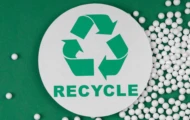Industrial shredders are powerful machines specifically engineered to process large volumes of materials, breaking them down into smaller, more manageable pieces for disposal or further use. They serve a critical function in waste management, recycling, and various manufacturing operations in numerous sectors. Here is an in-depth examination of their purpose and operational methods:

Definition of Industrial Shredders
Industrial shredders are sturdy apparatuses that can handle a diverse array of materials, including paper, plastics, metals, textiles, rubber, and electronic waste. Depending on their configuration and intended application, they are capable of shredding anything from lightweight office paper to heavy metal components like automobile bodies. These machines are indispensable in sectors such as waste management, recycling, automotive, manufacturing, and more.
Operational Mechanism of Industrial Shredders
The fundamental principle behind industrial shredders involves cutting, shearing, tearing, or compressing materials into smaller fragments. Key components of an industrial shredder comprise:
1. Feeding System: Materials are fed into the shredder through a feeding system, which can be a conveyor belt, a hopper, or a chute, tailored to the material type and shredder design.
2. Shredding Chamber: The shredding chamber accommodates the cutting mechanism, which typically comprises rotating blades, hammers, or rollers. These components are usually constructed from high-strength steel or alloys to endure the rigors of shredding resilient materials.
3. The cutting mechanism is responsible for breaking down the materials, and there are different types of cutting systems available. These include the single-shaft shredder, which has a rotating shaft with cutting blades that push the material against a stationary anvil or cutter bar. Another type is the dual-shaft shredder, which utilizes two counter-rotating shafts with interlocking cutting discs, making it ideal for bulk reduction and tough materials. Additionally, there is the quad-shaft shredder, which offers four shafts with cutters for extra-fine shredding, commonly used in security shredding applications.
4. Once the material has been sufficiently reduced, it exits the shredder through a screen or grid in the discharge area. This screen or grid determines the size of the shredded pieces, ensuring a uniform output size.
5. Modern shredders are equipped with control systems that allow operators to adjust various operational parameters such as speed and torque. Advanced models even include features like automatic reverse to clear jams and integrated diagnostics for maintenance purposes.
Applications of Industrial Shredders
Industrial shredders find wide-ranging applications in various industries:
1. Recycling: Industrial shredders are utilized to shred materials such as plastic, paper, and metal, enabling efficient recycling.
2. Waste Reduction: These shredders play a crucial role in reducing the volume of waste materials, making transportation and disposal more efficient.
3. Manufacturing: Industrial shredders are employed in the preparation of raw materials and processing of scrap materials in manufacturing processes.
4. Data Destruction: They ensure the secure destruction of digital media, documents, and other sensitive materials, safeguarding against data theft.
Benefits of Industrial Shredders
The utilization of industrial shredders offers several advantages:
1. Efficiency: By significantly reducing the size of waste materials, industrial shredders make handling and processing easier and more cost-effective.
2. Environmental Impact: Industrial shredders facilitate recycling and reusing materials, thereby contributing to the reduction of environmental impact caused by waste.
3. Security: These shredders guarantee the secure destruction of sensitive information, ensuring privacy and protecting proprietary data.
Industrial shredders are indispensable in numerous industries as they provide a practical solution for managing and recycling waste materials. Moreover, they support environmental sustainability and data security.
Inquire now
May not be reproduced without permission:Rumtoo Recycling Machinery » Industrial Shredders in Plastic Recycling: A Critical First Step

 Rumtoo Recycling Machinery
Rumtoo Recycling Machinery Contact Us
Contact Us 